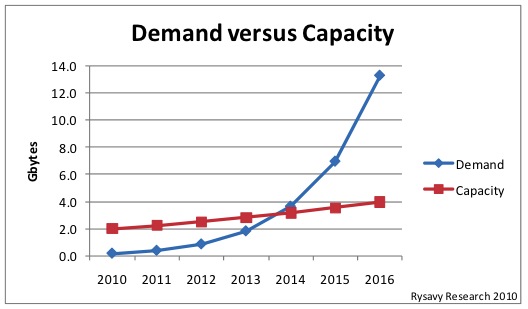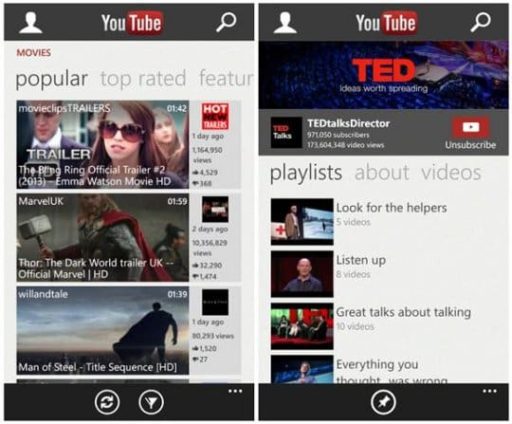According to wireless analyst Peter Rysavy, the demand for bandwidth to support mobile broadband services will outstrip the spectrum available by as early as mid-2013. At the Mobile World Congress in Barcelona, Rysavy presented a report explaining how the demand for bandwidth-consuming services used by more and more people will result in bad service, rising costs and limitations on mobile applications.
Here’s how Stacey Higginbotham of GIGAOM explains Rysavy’s report:
He begins with data showing the increasing demand on mobile networks and lays out how much bandwidth a variety of services need, from up to 12 kbps for voice calls to 1-2 Mbps to stream HD YouTube videos. After illustrating the capacity crunch, he starts to tie it to spectrum. In many cities, carriers have 55-90 MHz of capacity, only some of which is allocated to data services. Even today, some providers such as AT&T have indicated they’re using up to half of their spectrum resources in heavily populated markets.
 |
But more spectrum is only part of the issue. Operators have options ranging from more cell sites (either towers or even femtocells) to data offloading (sub req’d) to next-generation radio technologies such as Long Term Evolution to even antenna optimization. I detail many of these measures as well as AT&T’s spectrum shortage in a GigaOM Pro report published today called Everybody Hertz: the Looming Spectrum Crisis.
The Federal Communication Commission and Congress are playing a role in the spectrum issue, but it would be insane to think that handing over more airwaves will be enough, or that it will happen quickly. Useful spectrum for mobile broadband isn’t an infinite resource, so everyone from the developers building more resource-aware mobile applications to the folks in Washington allocating the spectrum and dictating regulations around mobile broadband will have to work together in order to make sure our desires for the mobile web are met.
Source: GIGAOM.


